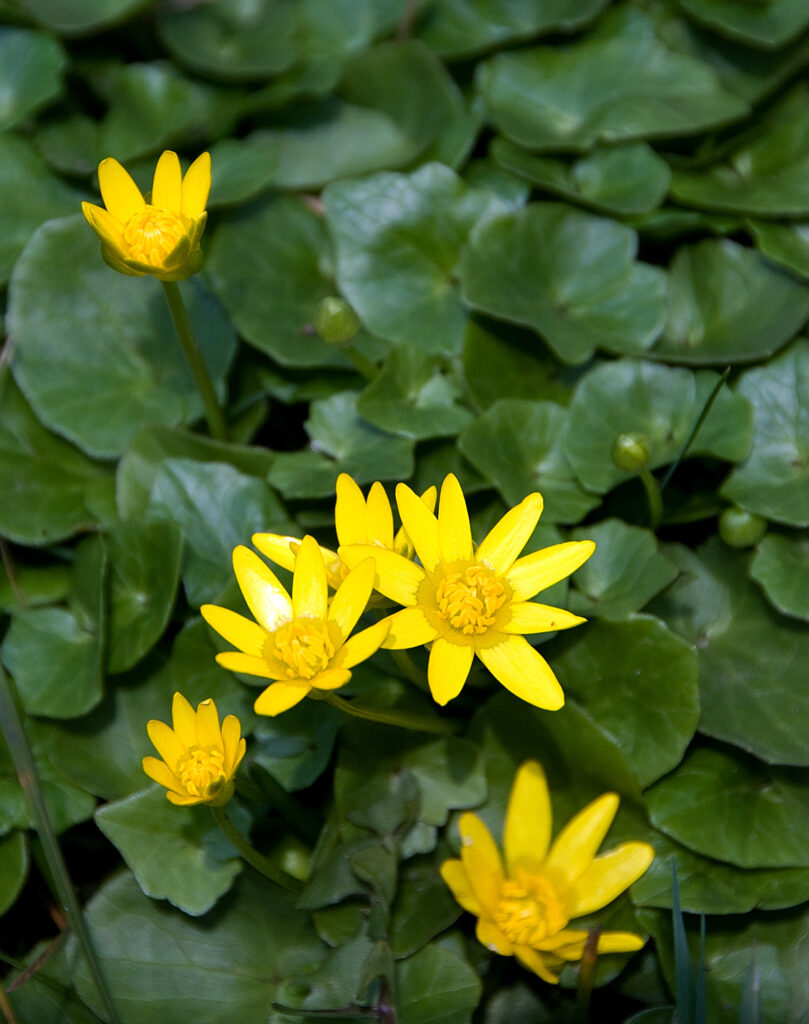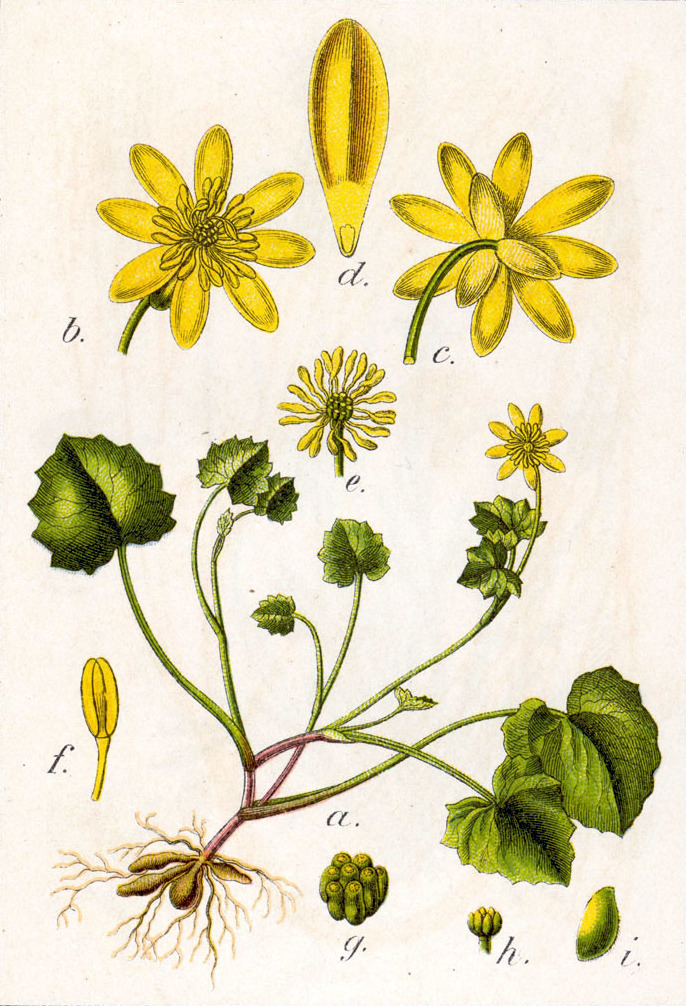
If one has the privilege of visiting the well-worn grave of the English Romantic poet William Wordsworth at St. Oswald’s Church in Great Britain, one will see, carved on his tombstone, lesser celandine. He even wrote three poems commemorating this plant. That’s because he was British, and it behaves better over there! Here is an excerpt:
There is a flower, the Lesser Celandine,
That shrinks like many more from cold and rain:
And, the first moment that the sun may shine,
Bright as the sun Himself, ‘tis out again!
Wordsworth was not the only person who loved this plant. Herbalists also praised its properties. It was said to be good for hemorrhoids, thus the name “pilewort.” “Wort,” by the way, means “plant.”
Lesser celandine was introduced to North America as an ornamental because it has very beautiful, lovely shiny yellow flowers in spring. Lesser celandine is in the buttercup family. The leaves are heart-shaped. It is a perennial plant and a spring ephemeral, which means that it disappears completely after about six weeks. Don’t be fooled by this. If it shows up for the first time in your early spring garden, you may even hope to welcome its return the following spring. So, what’s the problem? One plant will become twenty or more! It will jump from your flowerbeds to your lawn to your neighbor’s yard. This is because lesser celandine slumbers beneath the soil as little tubers. It also propagates by seed.
I do not know how I got an infestation of this weed, but I believe it was carried by wind or birds. I write that statement because in some places there were clusters of young plants all crowded together and struggling for light. I read somewhere that one plant can produce about seventy seeds. I have been digging out the plants, but I know deep inside that there still will be some plants next year. If you get this plant, please do not pull it out, because every little piece of tuber that remains will grow into a new plant. It’s like chopping up a starfish . . . each piece grows into a new starfish, or, in this case, a new lesser celandine.
Lesser celandine’s Latin name is Ficaria verna, and it is a buttercup relative “borne in the spring.” It is in the Ranunculaceae family and it often grows in temporarily wet areas, which are good for frogs. (The Latin name for frogs is Ranunculus.)
By the way, I did find a use for this plant. The flowers and leaves make beautiful pressed plants, useful for card making.

I am sure you are thinking, “Is there a greater celandine?” The answer is yes, but it isn’t related to the lesser celandine . . . it is in the poppy family and behaves itself.
You may also be thinking “Now, Carol Ann, don’t overreact. The lesser celandine plants are pretty, after all. So, what is the problem?”
The tubers send up leaves and flowers in late winter and spring. When the wind or birds carry the plant to areas of the forest the carpet formed by lesser celandine blocks out the light needed by our native spring plants.
What about marsh marigold, a relative of lesser celandine, and sometimes confused with it? Marsh marigold, Caltha palustris, is a native species that grows in wetlands. The flower stalks are about six to eight inches, unlike those of the very short lesser celandine. It doesn’t compete with other species, doesn’t form a mat, and has no tubers.
What to do? Dig them up. Oh sure . . . I have learned from some research that in cases where there are simply too many lesser celandine plants to dig up that certain herbicides will work. However, they must be applied before the plants bloom. Solarization works as well, but the convenience of spreading a plastic tarp over an extended area and knowing every plant under the tarp will be killed may be problematic. Good luck, my fellow gardeners!
Carol Ann Harlos is a Master Gardener in Erie County, New York.
Views: 3






